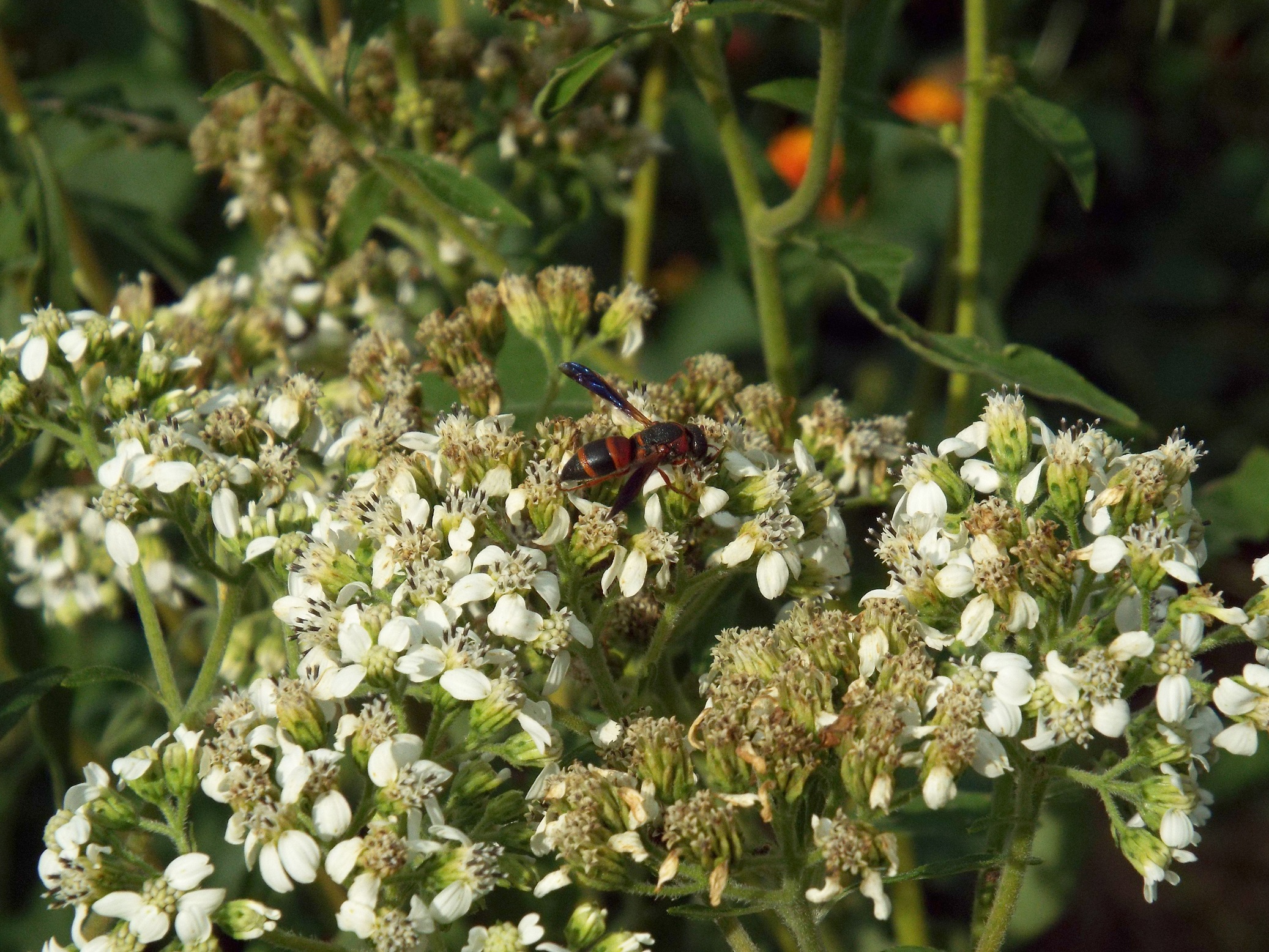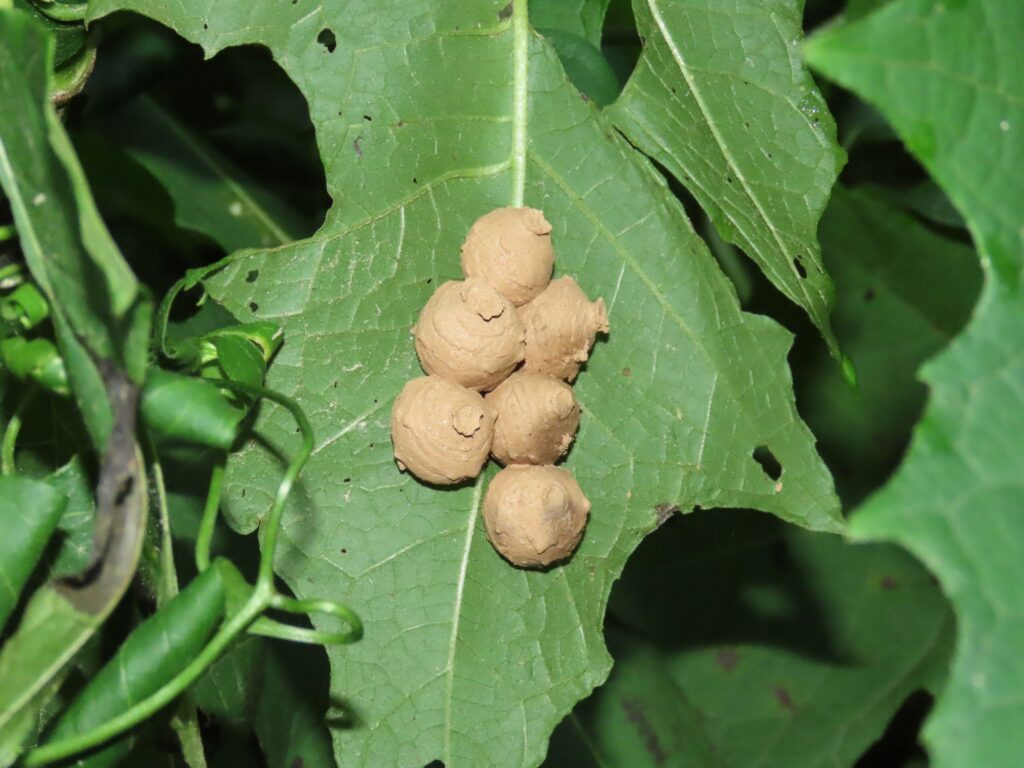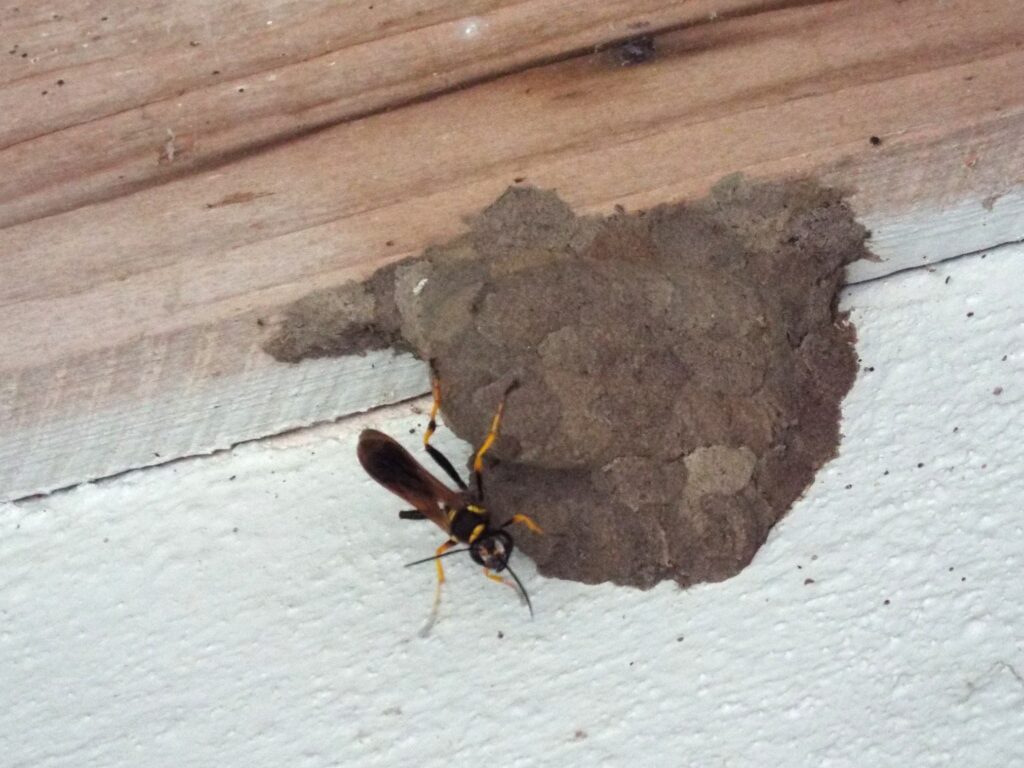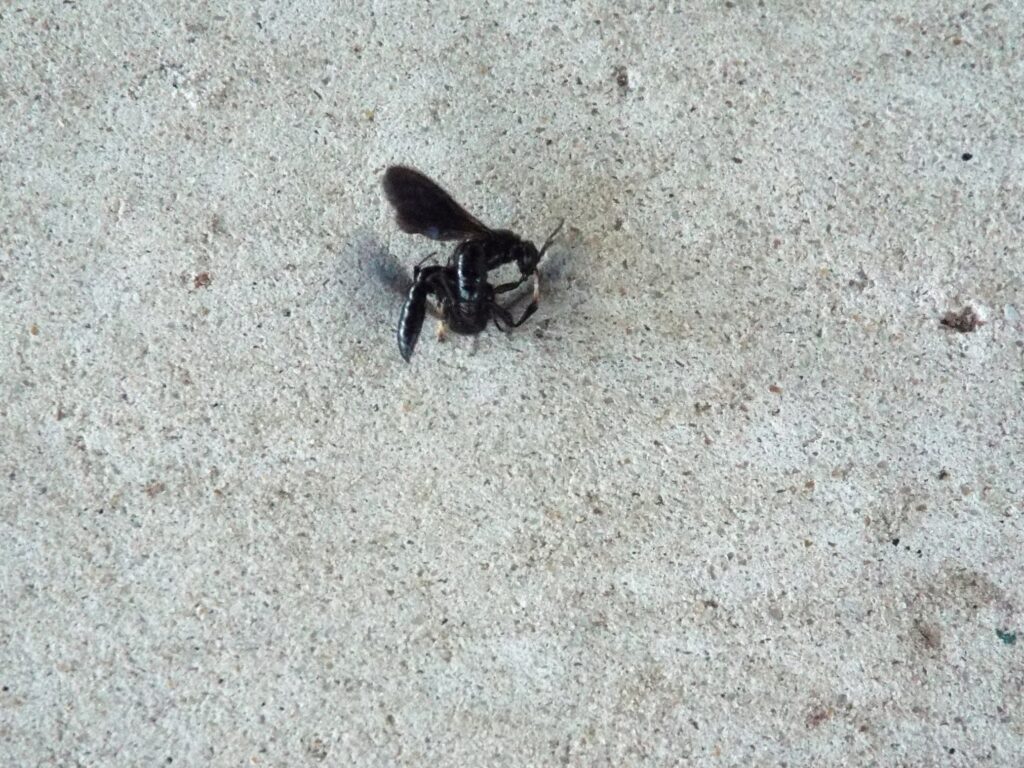
This week for Flora and Fauna Friday we’ve got a veritable grab-bag of mud-molding insects to appraise, the Mason Wasps, Potter Wasps, and Mud-daubers of the Eumeninae subfamily and the Sphecidae and Crabronidae families.
The terms “mason”, “potter”, and “mud-dauber” are generalized terms used to describe several groups of wasps belonging to multiple families, there being three major families found in South Carolina. As their three-fold common names all imply, these wasps are renowned for their defining feature of working and shaping clay. These wasps either chew up soil or slurp up mud to create a clay paste. They then carry the clay to a suitable workshop where they form it into whatever shape they desire. These three generalized common names refer to the style and architecture of their ceramic creations but, ultimately, they’re all solitary wasps building earthen cradles for their offspring. The clay shelters the baby wasps from the elements and protects them from predators.
Mason Wasps and Potter Wasps both belong to the subfamily Eumeninae. Mason Wasps are cavity nesters. They don’t build free-standing nests and instead build nests in small holes or cavities, typically hollow stems and holes left behind by other insects. After they pack the nest full of food and lay their eggs, they cap it off with a plug of mud and start the next nest. Sort of like how a mason fills the gaps between bricks with mortar, Mason Wasps seal gaps in cavities with mud. It’s an efficient and simple strategy but ultimately the Wasp is dependent on existing holes to make nests. Thus this is a highly diverse group with each member specialized in taking advantage of all manner of food sources and cavity types.


Potter Wasps, on the other hand, build free-standing nests. These nests are spherical and look like a crude earthenware urn, complete with a flared neck, spun on a potter’s wheel. They generally build these nests on the bottom of leaves or the shaded side of a building. They then stuff this urn full of paralyzed caterpillars before laying an egg within and sealing the top. The Fraternal Potter Wasp (Eumenes fraternus) is our prototypical Potter Wasp and widespread across the state. They’re less than an inch long with a round thorax, narrow waist, dark wings, and white markings on a black body.



Mud-dauber Wasps also build free-standing nests but they adhere them to the side of vertical structures, like trees, rocks, and buildings. They also build large compound nests, generally with dozens of chambers. They daub mud slowly into a complex structure, just like how wattle and daub was used to build primitive houses. Mud-daubers stuff their nests full of spiders they’ve stung and paralyzed. I’ll highlight three common Mud-dauber Wasp species found throughout the state, each about an inch to inch-and-a-half in length. The Common Blue Mud-dauber (Chalybion californicum) has a metallic dark blue-green body and iridescent blue-black wings. They build disorganized mound-like nests, often with a lumpy, patchwork appearance. The Yellow-legged Mud-dauber (Sceliphron caementarium) has a black body, thread-waist, lemon-yellow legs and markings, and amber colored wings. They build boxy dome-shaped nests full of stacked cigar-shaped egg chambers. Both the Common Blue and Yellow-legged Mud-daubers belong to the Sphecidae family. The third belongs to the Crabronidae family, the Organ Pipe Mud Dauber (Trypoxylon politum). The Organ Pipe Mud-dauber is solid black, except for its iridescent blue-black wings and pale hind feet. They build rows of long tubular nests, all parallel to one another and each containing multiple chambers stacked on top of each other. These tubular nests resemble the array of pipes in a pipe organ.
Mason Wasps and Mud-daubers can both be a nuisance in their own right. (Potter Wasps not too much.) Mason Wasps love to build nests in vent tubes, drain lines, and bolt holes. Driving untold number of mechanics and technicians to madness. Organ Pipe and Common Blue Mud-dauber nests built on the side of houses can be an eyesore to many and are a pain to clean off of stucco. Yellow-legged Mud-daubers cause the same issues but they also have a special proclivity for ceiling fans and engine bays where they unbalance things that are supposed to be balanced and stuff dirt into things where dirt should not be stuffed. However, despite the nuisance and the several concussions I’ve nearly sustained from a Mud-dauber nest dislodging from a radiator fan at 3,000rpm, these Wasps play a critical role in our local ecosystems and provide several invaluable ecosystem services. First, these wasps drink nectar as adults and are stellar pollinators. Wasps are second only to bees in South Carolina in terms of pollination volume. Second, they hunt other insects. Potter and Mason Wasps generally hunt caterpillars. Moth caterpillars eat plants, for the most part, and are prone to large population swings. A ballooning caterpillar population can have radical impacts to its host plant’s population and can upset an ecosystem. Birds and reptiles can take advantage of these population swings, but they can’t grow their populations fast enough to control them. Yet, wasps can. So Potter and Mason Wasps play a critical role in controlling moth populations and stabilizing ecosystems. The same can be said for how Mud-daubers hunt spiders. Spiders eat a lot of pollinators and so they keep pollinator populations in balance. Mud-daubers in turn hunt the spiders, keeping spider populations in check and ensuring most pollinators can carry on their business as usual. Lastly, Potter Wasps and Mud-daubers make research easy for many entomologists. If an entomologist wants to study the local spider or moth populations, they can often just go find a fresh Mud-dauber of Potter Wasp nest, pop it off the wall, and crack it open in the lab like a creepy-crawly filled Kinder Egg. The arachnids and insects within the nest are alive but paralyzed by venom and are usually perfectly preserved specimens for study. This technique provides a wholly unique sampling method from anything researchers can replicate manually and has aided in the study of an untold number of arthropods!